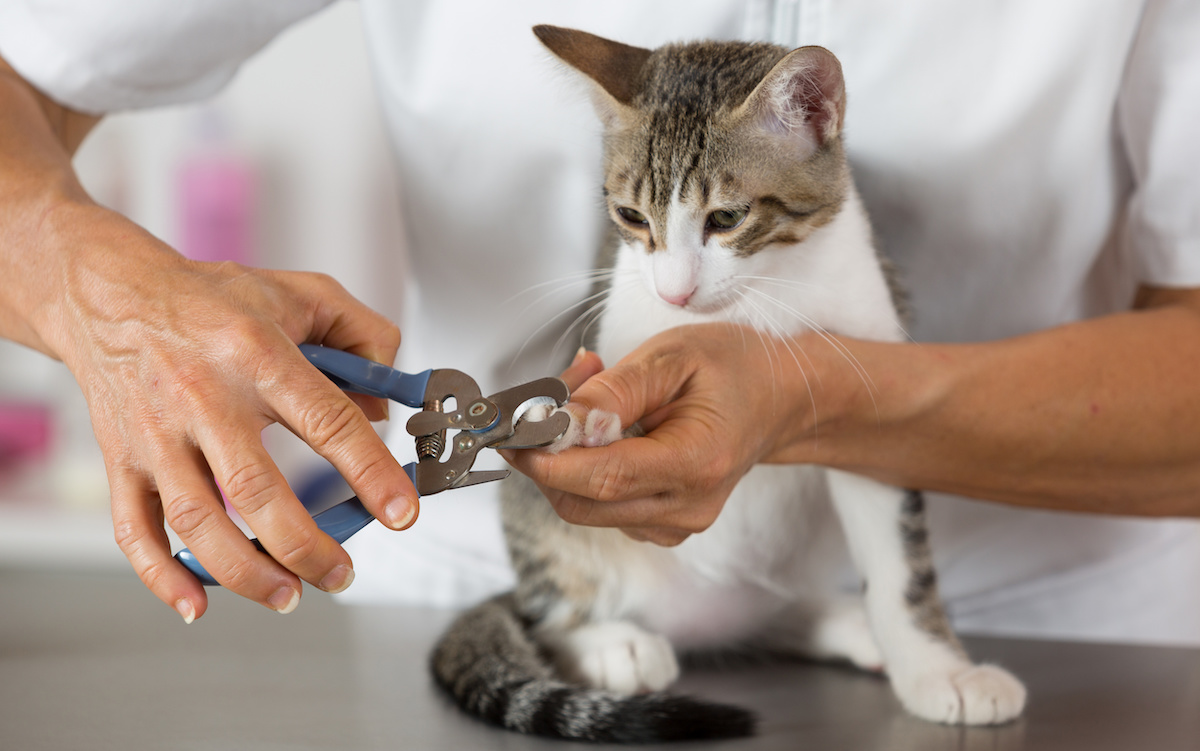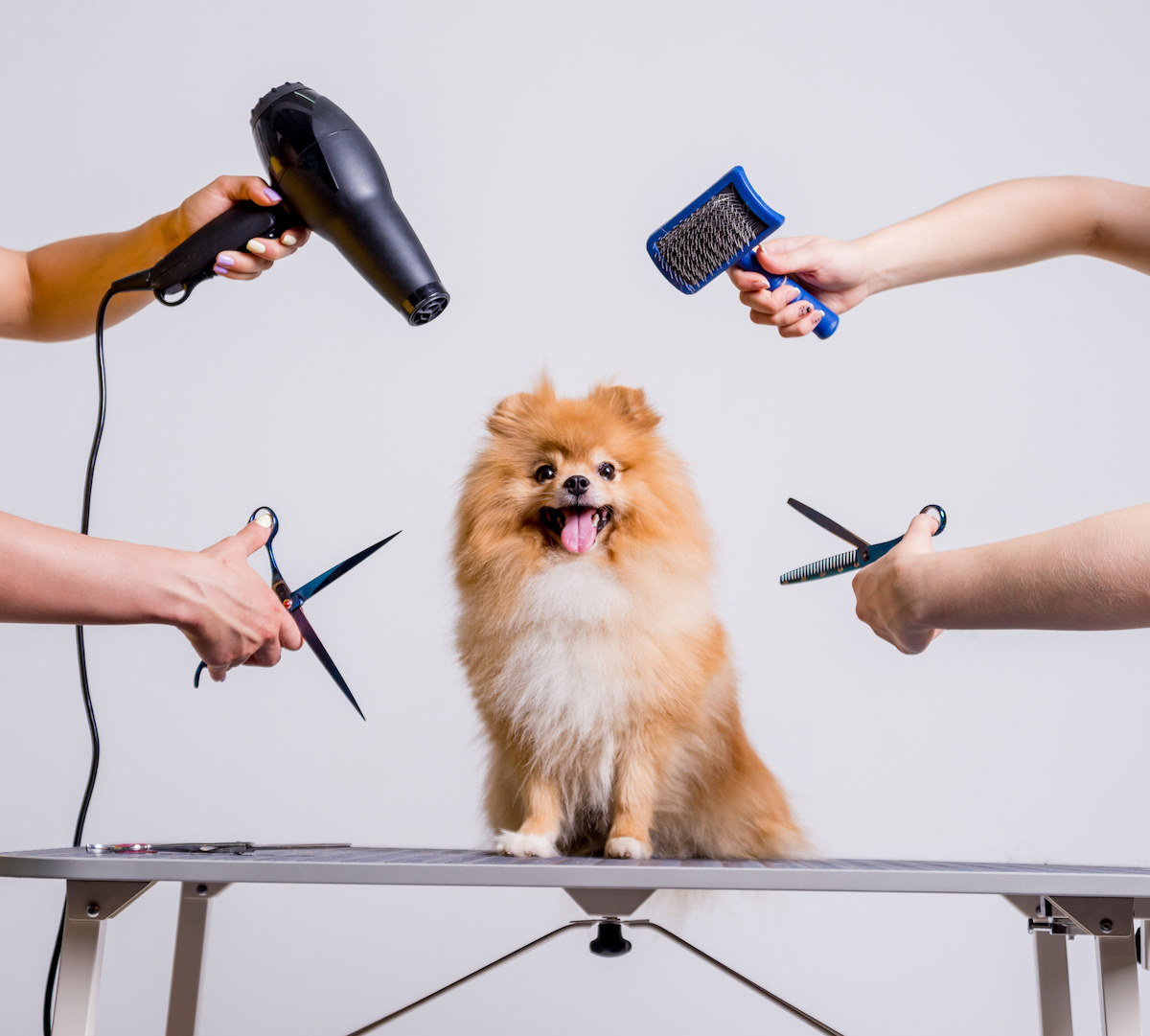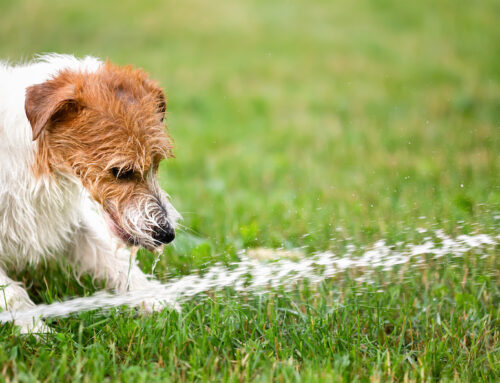Searching for the best grooming tips for pets? We’ve got you covered!
Grooming is an essential piece to maintaining your furry companions’ health and happiness. In this article, we’ll cover a variety of grooming tips that go beyond just aesthetic appeal. From the basics of regular brushing to specialized care for different breeds, we aim to empower pet owners with the knowledge and tools needed to ensure their pets look, feel, and live their best lives.
Why Sticking to Grooming Tips for Pets So Important?
Grooming is not merely about keeping your pet clean; it’s an essential component of their overall health. Regular grooming helps prevent various health issues such as:
- Skin infections
- Matting
- Even behavioral problems
Beyond hygiene, grooming sessions also provide an opportunity to inspect your pet’s skin, ears, eyes, and teeth for any signs of abnormalities or health concerns. Proper grooming fosters a strong bond between pet and owner while promoting a stress-free and enjoyable environment for both.
Brushing Basics for Different Fur Types
One of the fundamental grooming practices is brushing, and the frequency and type of brush depend on your pet’s coat.
- Long-haired breeds, such as the Persian cat or the Golden Retriever, require daily brushing to prevent matting and reduce shedding.
- Short-haired breeds, like the Beagle or the Siamese cat, benefit from weekly brushing to minimize loose hair and distribute natural oils.
Here are 3 tips for making the brushing experience positive for both you and your furry friend:
1. Positive Reinforcement and Treats
Associate brushing with positive experiences by offering treats and praise during and after each grooming session. This creates a positive association, making your pet more receptive to the brushing process.
Start with short sessions, gradually increasing the duration as your pet becomes more comfortable. Providing treats at the end of the session serves as a reward, reinforcing good behavior and making brushing a more enjoyable experience for your furry friend.
2. Choose the Right Tools
Selecting the appropriate grooming tools is crucial for making brushing comfortable for your pet. Use a brush that suits your pet’s coat type, whether it’s a slicker brush for removing loose hair or a comb for detangling. Begin with gentler tools, especially if your pet is new to grooming. If your pet has mats or tangles, work through them gently to avoid causing discomfort.
Additionally, consider using grooming tools with soft bristles or rounded tips to prevent irritation and ensure a more pleasant experience for your pet.
3. Incorporate Regularity into the Routine
Establish a regular grooming routine to familiarize your pet with the brushing process. Consistency is key to reducing anxiety or reluctance during grooming sessions.
Set a specific time for brushing each day or week, depending on your pet’s needs. Regular brushing not only prevents matting and reduces shedding but also conditions your pet to expect and accept the grooming routine.
Over time, as the routine becomes familiar, your pet is likely to become more cooperative and less resistant to the grooming process.

Timing and Techniques for Bathing Your Pets
While some pets enjoy water and others may not be as keen, bathing is a crucial aspect of grooming. The frequency of baths depends on factors such as:
- Breed
- Activity level
- Skin condition
Dogs prone to skin issues may require medicated shampoos, while cats may benefit from waterless grooming products.
Trimming Techniques and Tools for Your Pet’s Nails
Trimming your pet’s nails is a task that often causes anxiety for both pet and owner. However, neglecting nail care can lead to:
- Discomfort
- Difficulty walking
- Potential injuries
Here are four of our best tips for safely trimming your pet’s nails:
1. Use the Right Tools
Invest in high-quality nail clippers designed specifically for pets. There are different types of nail clippers available, including guillotine-style and scissor-style clippers. Choose the one that you find most comfortable to handle and that suits your pet’s nail size and thickness.
Additionally, keep a styptic powder or gel on hand to quickly stop bleeding in case of accidental cuts. Familiarize yourself with the tools before starting the nail trimming process to ensure a safe and effective experience.
2. Gradual Introduction and Positive Reinforcement
Introduce your pet to the nail trimming process gradually to minimize anxiety. Begin by gently handling your pet’s paws without attempting to trim the nails.
Offer treats, praise, and positive reinforcement during this process to create a positive association. Once your pet is comfortable with paw handling, gradually progress to using the nail clippers without actually trimming.
This step-by-step approach helps build trust and reduces stress, making the actual nail trimming experience more relaxed for both you and your pet.
3. Understand the Anatomy of the Nail
Before trimming your pet’s nails, understand the anatomy of the nail and locate the quick—the sensitive blood vessel and nerve inside the nail. In lighter-colored nails, the quick is visible as a pinkish area, while in darker-colored nails, it may be harder to discern.
Trim only the tips of the nails, avoiding the quick to prevent pain and bleeding. If you’re uncertain about the location of the quick, err on the side of caution and trim smaller amounts at a time. Regular, smaller trims are safer than attempting to cut a large portion of the nail at once.
4. Enlist Assistance if Needed
If your pet is particularly anxious or resistant to nail trimming, consider enlisting the help of a friend or family member. Having someone to gently hold and comfort your pet while you focus on the trimming can make the process smoother and less stressful.
Alternatively, if your pet is comfortable, you may try placing them on a non-slip surface, such as a grooming table or rubber mat, to provide better control during the nail trimming session.
Always prioritize your pet’s safety and well-being, and if necessary, consult with a professional groomer or veterinarian for guidance on nail trimming techniques.
Maintaining Healthy Ears, Eyes, and Teeth for Your Pet
Ears, eyes, and teeth are vital sensory organs for pets, and regular grooming is essential for maintaining their health.
1. Regular Ear Cleaning
Ensure your pet’s ears stay healthy by incorporating regular ear cleaning into their grooming routine. Use a veterinary-approved ear-cleaning solution and gently wipe the inner ear flap and visible ear canal with a soft cotton ball or pad. Avoid inserting anything into the ear canal, as this can cause injury.
Pay attention to any signs of redness, swelling, or an unusual odor. If you notice persistent problems, consult your veterinarian for guidance and potential treatment.
2. Routine Eye Care
Keep your pet’s eyes bright and healthy by regularly checking for any signs of:
- Irritation
- Discharge
- Redness
Wipe away any discharge from the corners of their eyes with a clean, damp cloth. If your pet has tear stains, consider using a pet-safe solution recommended by your veterinarian to gently remove the staining.
If you notice persistent eye issues or changes in your pet’s vision, seek professional advice promptly. Regular veterinary check-ups can help catch and address eye problems early, ensuring optimal eye health for your furry friend.
3. Dental Hygiene Practices
Maintain your pet’s oral health by implementing good dental hygiene practices. Regularly brush your pet’s teeth using a pet-friendly toothbrush and toothpaste. Start slowly, allowing your pet to get accustomed to the taste of the toothpaste and the sensation of having their teeth brushed.
Dental chews, toys, or specialized dental diets can also aid in reducing plaque and tartar buildup. Monitor your pet’s teeth for signs of dental issues, such as:
- Bad breath
- Swollen gums
- Difficulty eating
Professional dental cleanings by a veterinarian may be necessary periodically to address more advanced dental issues and ensure overall oral health.

Dealing with Specialized Grooming Needs
Certain breeds and individual pets may have specific grooming needs.
Dogs with curly coats, such as Poodles, may require professional grooming to prevent matting, while double-coated breeds like Huskies may need extra attention during shedding seasons.
Cats with long hair, such as Maine Coons, benefit from regular grooming to prevent hairballs.
Make sure you research your pet’s breed and learn any specific grooming tips. You can also reach out to our team at Animal Care Center for expert grooming advice.
Follow These Grooming Tips for Pets for a Positive Experience
Grooming sessions should be a positive and enjoyable experience for both pets and owners. Whether you have a puppy, kitten, or an older pet, fostering a calm and positive grooming environment is key to establishing a lifelong routine that benefits their health and strengthens your bond.
At Animal Care Center, we believe that grooming is an essential aspect of responsible pet ownership. By incorporating these grooming tips for pets into your routine, you’re not only enhancing your pet’s appearance but also contributing to their overall health and happiness.
Regular grooming not only prevents potential health issues but also allows you to spend quality time with your furry friends. Remember, these grooming tips for pets will lead to a happy and healthy pet, our team at Animal Care Center is here to support you on your journey to providing the best care for your beloved companions!






